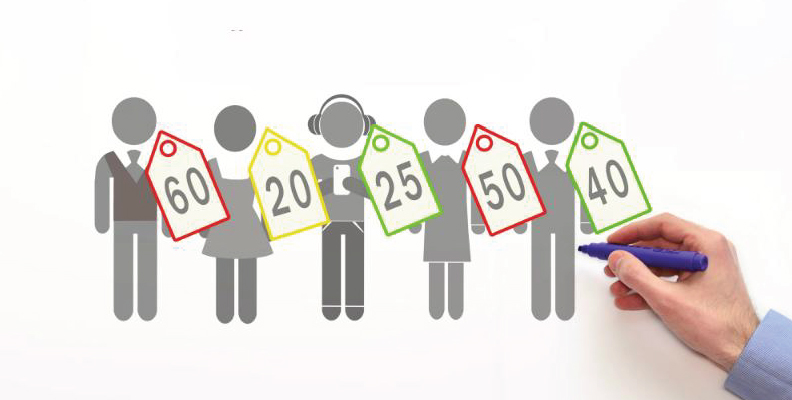AGE AND THE WORKPLACE

With Covid-19 affecting us all, one of the biggest casualties has been on the employment front. Covid-19 has not only resulted in people “working from home” but now many many NOT WORKING at all.
And many of these are people at the more “mature” end of the spectrum, BUT NOT ready to slow down nor retire!
And the interesting thing is, in this day and age, employers, HR managers, and employees are all well aware of the value of an inclusive and diverse work environment, and yet, ageism prevails, WHY?
What is ageism?
A 30-year-old female CA is told that she is “too young” to be a Financial Controller.
An experienced Financial Controller in his late 40’s is told that the company is looking for an “up and comer” with a lot of energy and new ideas, with no “bad habits,” while an employee in her 60’s is persuaded not to attend an industry conference, to allow her to “take some well-earned rest, and have an easy month.”
Although ageism can cut both ways, most studies have focused on the +50’s.
Research has shown that more than half of the workforce has witnessed or experienced ageism.
And even though the “research” overwhelmingly disproves the common stereotypes about older workers, the new ways have yet to be fully adopted into the modern workplace.
And so, it’s vital we are all vigilant for signs of ageism and to know what your rights/options are if ever faced with this in the workplace.
So what is ageism?
Ageism, also spelled agism, is stereotyping and/or discrimination against individuals or groups on the basis of their age. This may be casual or systematic. The term was coined in 1969 by Robert Neil Butler to describe discrimination against seniors and patterned on sexism and racism. (Wikipedia)
And legally, age discrimination occurs when a person is treated less favourably, or not given the same opportunities as others in a similar situation because he or she is considered to be too old or too young.
The Age Discrimination Act 2004 (ADA) prohibits discrimination in employment on the basis of age. It applies to young and older workers alike.
The ADA also protects younger and older Australians from discrimination in other areas of public life, including education; getting or using services; or renting or buying a house or unit.
In addition, the ADA makes it unlawful to harass or bully another person because of his or her age.The intention of making it illegal may be clear-cut, yet in reality, it’s application is anything but, as human interactions are inherently “complicated”.
The ADA also protects younger and older Australians from discrimination in other areas of public life, including education; getting or using services; or renting or buying a house or unit.
In addition, the ADA makes it unlawful to harass or bully another person because of his or her age.The intention of making it illegal may be clear-cut, yet in reality, it’s application is anything but, as human interactions are inherently “complicated”.
Across the board, it’s unlikely to have two employees with the exact same performance, as skills and expertise vary, and like it or not, we all acknowledge and recognise people’s age I day not day life, professional or private. Age distinctions and performance differences aren’t the problem, but in order to have an inclusive workplace, we need to be able to differentiate between the two.
What does ageism in the workplace look like?
Most hiring/HR managers would deny the existence of ageism, yet, the reality is NOT that clear-cut, as ageism often goes unnoticed, and innocent behaviors may seem like ageism to some. So, it’s precarious to assume that all is well and dandy just because you work at a “progressive-thinking” organisation, and, just because something feels like ageism doesn’t mean it is.
Most hiring/HR managers would deny the existence of ageism, yet, the reality is NOT that clear-cut, as ageism often goes unnoticed, and innocent behaviors may seem like ageism to some. So, it’s precarious to assume that all is well and dandy just because you work at a “progressive-thinking” organisation, and, just because something feels like ageism doesn’t mean it is.
Here are a few examples of what age discrimination might look like:Career development courses are automatically offered to younger employees.
Being overlooked for NEW and “challenging” projects. OR, unpleasant or tedious assignments are more than often given to the “older” employees.
Not being invited to new client meetings or company social events.
It’s assumed you are not entitled to take time off for family commitments because you don’t have young children living at home anymore.
Inappropriate or hurtful comments/jokes about age…in the guise of retirement plans, slow typing speed, level of fitness etc. Or, it could be more aggressive in the form of being pressured to relinquish workload or even retire?
Being overlooked for NEW and “challenging” projects. OR, unpleasant or tedious assignments are more than often given to the “older” employees.
Not being invited to new client meetings or company social events.
It’s assumed you are not entitled to take time off for family commitments because you don’t have young children living at home anymore.
Inappropriate or hurtful comments/jokes about age…in the guise of retirement plans, slow typing speed, level of fitness etc. Or, it could be more aggressive in the form of being pressured to relinquish workload or even retire?
And the list goes on…
So, what’s the solution?
Don’t assume that you or your workplace are totally immune to age discrimination. Learn to recognize your own thinking patterns, challenge your assumptions/stereotyping, and don’t distance yourself by thinking that this could never happen to you.
If you have experienced ageism or think it’s a possibility, here are a few strategies:
- Invest in your continued growth and development. Read, stay up to date on trends and best practices, and push yourself to do better every year. Get a mentor, whether within your current company or outside, who is dedicated to supporting your success.
- Make a commitment to embrace the aging professionals, as they are a wealth of industry and institutional knowledge. But remember, there’s value in not reminiscing about “the good old days.” Don’t be your own worst enemy, and bring up your age as the reason why your manager should take it easy on you. Don’t fall into a belief that your workplace “owes you” something for your past contributions. Don’t buy into age stereotypes, as your own actions/thinking can affect how you act.
- Project the same level of enthusiasm and professionalism as your younger colleagues, as there is no reason to not do your best at all times, even though you may feel secured and established in your position.
Finally, if you are experiencing agiesm, protect yourself by taking notes; recording the dates and witnesses to conversations, and get HR invololved ASAP, as they can and are equipped to help you assess the situation and advise you on your appropriate “next steps”.
Just like your younger colleagues, keep your network active and your options open, and above all, stay on top of your game.






